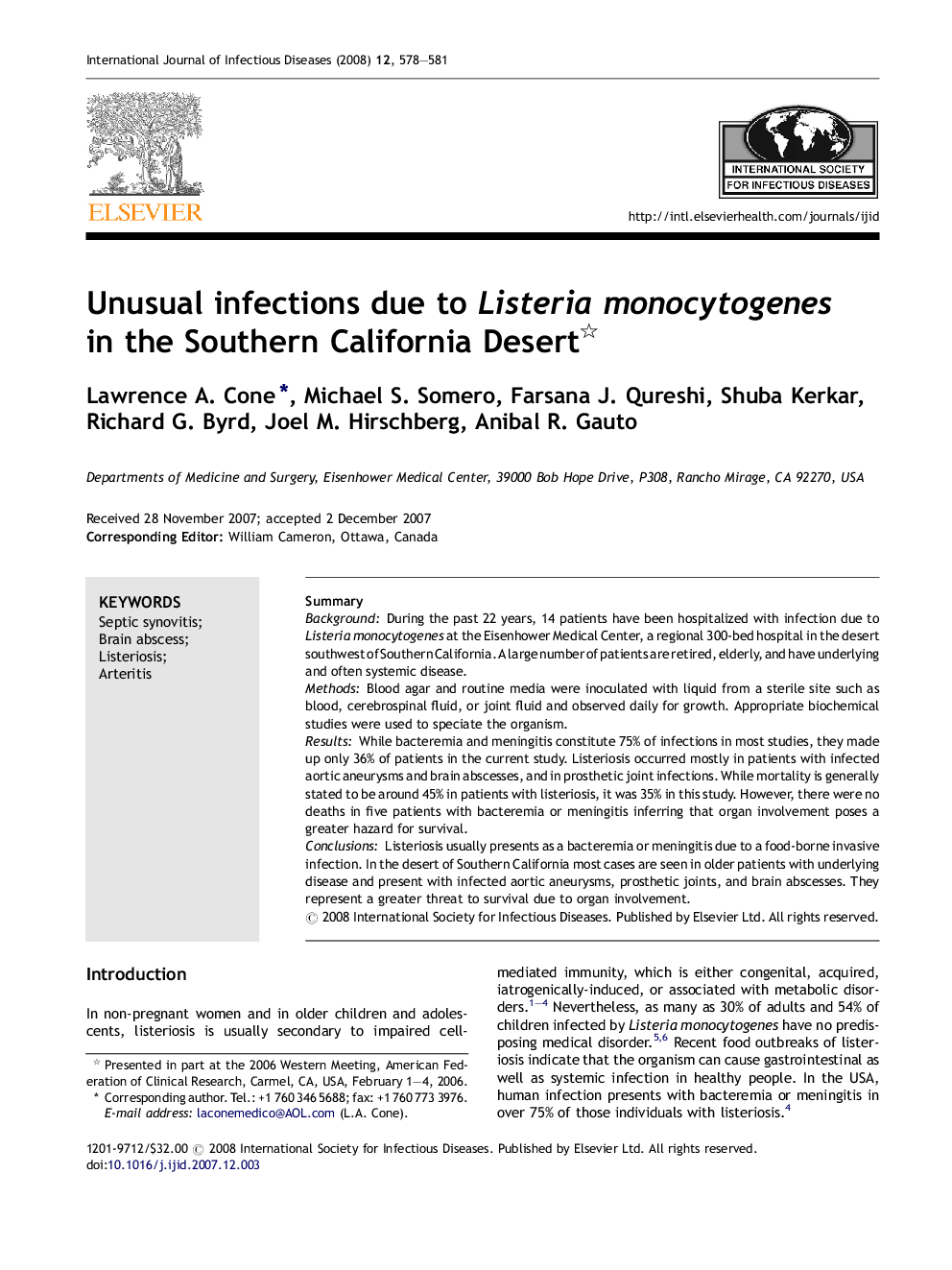| Article ID | Journal | Published Year | Pages | File Type |
|---|---|---|---|---|
| 3364816 | International Journal of Infectious Diseases | 2008 | 4 Pages |
SummaryBackgroundDuring the past 22 years, 14 patients have been hospitalized with infection due to Listeria monocytogenes at the Eisenhower Medical Center, a regional 300-bed hospital in the desert southwest of Southern California. A large number of patients are retired, elderly, and have underlying and often systemic disease.MethodsBlood agar and routine media were inoculated with liquid from a sterile site such as blood, cerebrospinal fluid, or joint fluid and observed daily for growth. Appropriate biochemical studies were used to speciate the organism.ResultsWhile bacteremia and meningitis constitute 75% of infections in most studies, they made up only 36% of patients in the current study. Listeriosis occurred mostly in patients with infected aortic aneurysms and brain abscesses, and in prosthetic joint infections. While mortality is generally stated to be around 45% in patients with listeriosis, it was 35% in this study. However, there were no deaths in five patients with bacteremia or meningitis inferring that organ involvement poses a greater hazard for survival.ConclusionsListeriosis usually presents as a bacteremia or meningitis due to a food-borne invasive infection. In the desert of Southern California most cases are seen in older patients with underlying disease and present with infected aortic aneurysms, prosthetic joints, and brain abscesses. They represent a greater threat to survival due to organ involvement.
